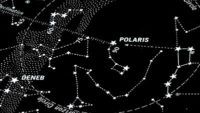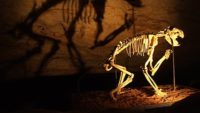“Were it not for the asteroid, humans would never have evolved,” said Ian Miller, curator of paleobotany and director of earth and space sciences at the Denver Museum of Nature & Science.1 Such is the science of evolution that explains the origin of mankind. Miller and other evolutionists maintain the massive asteroid strike of the Yucatan peninsula (allegedly 66 million years ago) wiped out the dinosaurs… More… …read more Source: icr.org
Spiders use electric fields in the atmosphere to help them get airborne …read more Source: creation.com
The complexities of turning a non-biped ape into something that walks bipedally appears to be totally ignored by evolutionists when they peddle their just-so stories. …read more Source: creation.com
Paleontologists in Australia have recently discovered a treasure trove of amber with trapped insects, spiders, and fungi.1 These new fossils are revealing some animal behavioral secrets and are creating some baffling mysteries. Amber is ancient tree resin. And many times what is trapped in the amber can provide us with a glimpse of life in the past—like a time capsule. This new discovery, published in Scientifi… More… …read more Source: icr.org
By Dr. Danny R. Faulkner How astronomers track Polaris and other Cepheid stars, issues related to the North Star, and how it relates to cosmology in a stellar evolutionary framework. …read more Source: AIG Daily
Research into the huge polystrate reed fossils (lycopods) at Joggins, Nova Scotia shows that deep time is in deep trouble. …read more Source: creation.com
By Ken Ham An article appeared recently in the “Space + Science” section of CNN’s website. This piece was titled, “Ancient humans are having a moment—Here are the fascinating things we’re learned this week about our ancestors.” The lengthy article then described a series of discoveries and, more importantly, their interpretations, as it relates to our supposed evolution. Several of these studies change what evolutionists thought they knew about our ancestry. One week and humanity’s evolutionary story is rewritten … again (as it has been again, and again, and again, and again . . .)! For example, the article discussed [More]
By Dr. Andrew A. Snelling The Scriptures are silent on the issue of whether there were any volcanoes or earthquakes in the world before the Flood, but we do know there were mountains. …read more Source: AIG Daily
Tim Clarey, Ph.D., and Frank Sherwin, M.A. The recent discovery of a flooded Ice Age forest in Mobile Bay, Alabama, has scientists diving for even more hidden secrets.1 In December 2019, a team of scientists from Northeastern University and the University of Utah took the Research Vessel E.O. Wilson to collect some pieces of the ancient trees.2 But these … More… …read more Source: icr.org
Another major oil discovery in the deep waters of the Gulf of Mexico has been recently announced.1 Equinor, a Norwegian-based oil company, and partners Progress Resources USA Ltd. and Repsol E&P USA Inc. made the proclamation last week. This is another well that appears to have found mysterious sands, such as the Whopper Sand found previously in the deep waters of the Gulf.2 Equinor used the drilling ship … More… …read more Source: icr.org
Recently, a team of geochemists from Belgium reported that days might have been 30 minutes shorter in the Late Cretaceous compared to today, giving 372 days in a year.1 They published their results in Paleoceanography and Paleoclimatology, basing their conclusions on growth patterns in an extinct bivalve called a rudist clam. But is it really true that the Earth had 372 days each year in the past? Many secular s… More… …read more Source: icr.org
In today’s change-filled world, God is ubiquitously displaying His creativity to provide for our most important needs. God’s creative providence fulfills what we need to solve the challenging problems of daily living. Something similar is exhibited in the world of nature. Creatures are built with traits that adapt to the situations that surround them. The Eurasian Woodcock (Scolopax rusticola) looks like a skin… More… …read more Source: icr.org
A recent report in the journal Science mixed detailed archaeological finds with stories about human origins. As is typical, age assignments for fossils fit evolutionary time instead of the Bible’s much shorter timeline of thousands, not millions, of years. But the age-dating exercises revealed more about what these scientists believe about the past than what the rocks and fossils themselves reveal. A cave on the Port… More… …read more Source: icr.org
Pterosaurs were amazing flying reptiles that came in all shapes and sizes.1 Not surprisingly, when these bizarre creatures are found in the fossil record they are 100% flying reptiles. Some achieve the size of a fighter jet, such as Quetzalcoatlus discovered in Texas or Hatzegopteryx in Romania. Paleobiologists have recently discovered a new pterosaur (Afrotapejara zouhrii) in Africa belonging to a group call… More… …read more Source: icr.org
New concerns have surfaced this week about melting ice from within the deepest point on the continents.1 Worry over the rapid melting of the ice-filled Denman Canyon has sparked more environmental concern over climate change. But are we letting our fears get ahead of ourselves? Denman Canyon was only recently identified in December 2019 as the deepest point on land.2 The trough is 20 kilometers (12.4 miles) wi… More… …read more Source: icr.org
Evolutionists are celebrating the discovery of what they claim is a small dinosaur skull trapped in Burmese amber.1 Oculudentavis khaungraae is declared to be a tiny Mesozoic dinosaur that is 99 million years old. Yet, the physical traits point to it being 100% bird. Lars Schmitz, associate professor of biology, stated, “Its unique anatomical features point to one of the smallest and most ancient birds eve… More… …read more Source: icr.org
Last month, the ICR Discovery Center hosted “Origins: Re-examining the Evidence,” a special event featuring three of ICR’s scientists—experts in geology, fossils and human origins, and genetics. The purpose of the event was to explore claims secular anthropologists have made about supposed ancestors of modern humans. ICR’s Dr. Jeff Tomkins, Dr. Tim Clarey, and Dr. Brian Thomas each presented compelling arguments from… More… …read more Source: icr.org
A recent study has ruled out a possible candidate for dark matter, the mysterious invisible “stuff” said to comprise 85% of the matter in our universe.1,2 The Big Bang model needs dark matter for a number of reasons. So, this is bad news for the Big Bang model. Most secular cosmologists believe in dark matter. Some biblical creationists also think dark matter exists,3 but others (including me) are … More… …read more Source: icr.org
Is it ok for humans to modify organisms? What about human-animal hybrids? We discuss the biblical and ethical guidelines for Christians in today’s world of rapidly developing biotechnology. …read more Source: creation.com
To the Ark, and Back Again? Using the Marsupial Fossil Record to Investigate the Post-Flood Boundary
By Chad Arment There is no debate as contentious as the post-Flood boundary issue within creation science. …read more Source: AIG Daily
Neanderthals are classified by evolutionists as archaic humans given that both their DNA and bones are essentially human. Yet, new stories constantly hit the headlines with the supposedly shocking news that anatomically modern humans and Neanderthals were found to have interbred once again. Recently, another such story appeared in the journal Genetics.1 Why is this type of news so exciting, yet also so confusing to ev… More… …read more Source: icr.org
High-speed creature communication has been making the news recently. There was underwater research on deep-sea squid,1 and now bird communication. In fact, the rapid signaling discovered in the honeyeater bird is all part of an intricate multi-part message that has scientists in awe at both its rapidity and complexity.2 The honeyeaters are a large and diverse family of small to medium sized birds mostly found … More… …read more Source: icr.org
Lingwulong shenqi, ‘amazing dragon of Lingwu’, is a Diplodocus-like dinosaur confounds evolutionists by being in the wrong place and time …read more Source: creation.com
A recent study in March 2020 suggested that sulfur dioxide (SO2) injected into Earth’s stratosphere could fight global warming, with a minimum of adverse effects.1,2 Here at ICR we generally think alarmism over “global warming” or “climate change” is unwarranted. We aren’t necessarily endorsing this proposal, but we can use it to shed light on what really caused the Ice Age…. More… …read more Source: icr.org
Now is the season—late March and April—for bluebonnets to blossom in Texas!1 Establishing these beautiful flowers is difficult, as many have learned. But that difficulty is itself telltale evidence of God’s bioengineering care, because those flowers need much more than luck to succeed! Consider the lilies of the field, how they grow; they neither toil nor spin; and yet… More… …read more Source: icr.org
Where did disease-causing viruses come from? …read more Source: creation.com














































